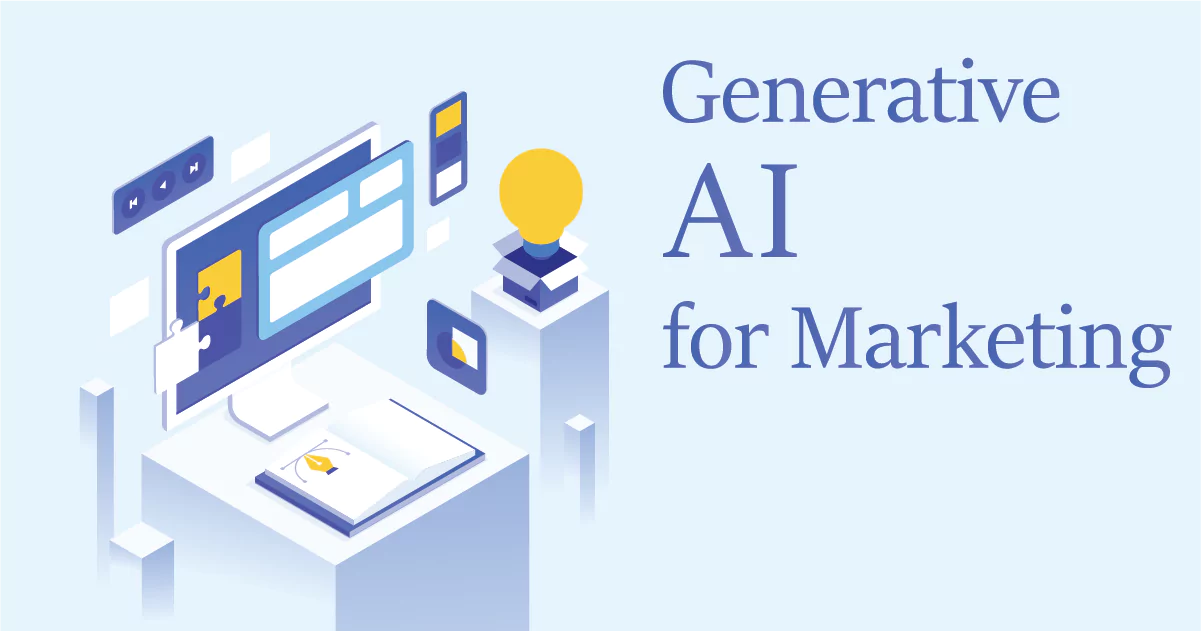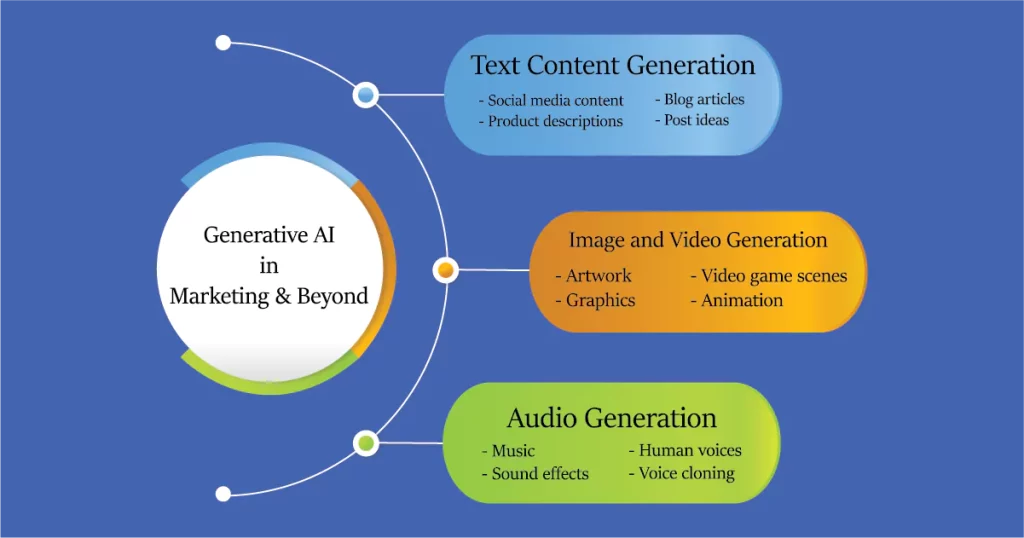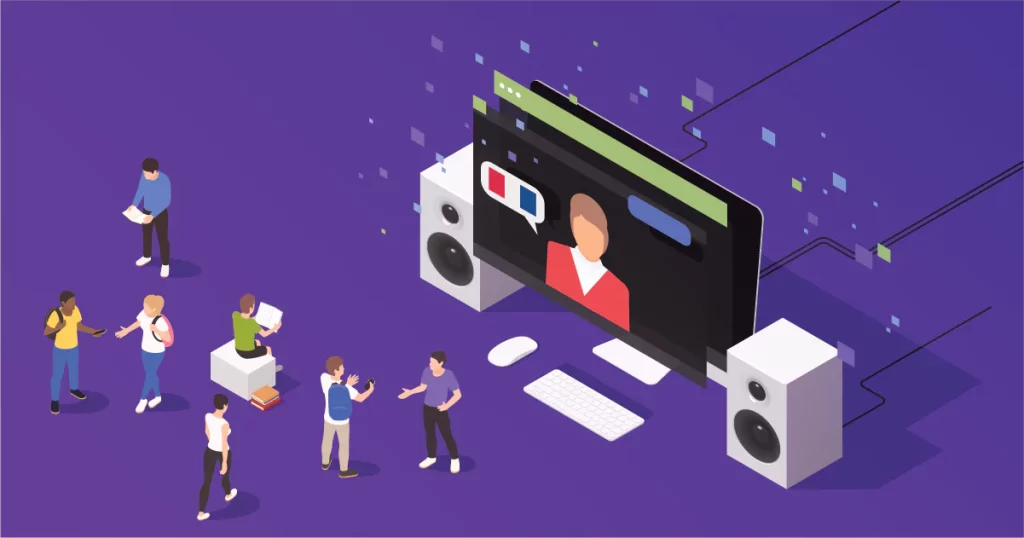
In this article, we are going to explain to you about generative AI (a very trending topic these days) and how it can be used for marketing.
Basically, generative AI is a subset of Artificial Intelligence that generates unique content by analyzing data, identifying patterns and trends, and applying algorithms. It can create content such as images, text, audio and video.
How?
It does this after being trained on large sets of existing data. It generates similar and dissimilar data based on user’s preference but it never generates identical data.
There are several ways of using generative AI for marketing.
Text Content Generation:
Content generation requires time and effort that is now minimized by Generative AI. Businesses can use it to write social media content such as product descriptions, and captions for their posts, generate new post ideas, and create new slogans. Moreover, businesses using Generative AI can write their blog articles in less time and blog posts. Time is money and implementing AI saves a lot of time and effort.
Image and Video Generation:
Generative AI can also create images and videos. It uses patterns and data from existing examples and generates artwork, design graphic, and even scenes for video games and animations. This automation saves time and ensures consistency in content production.
Audio Generation:
Generative AI models can also generate music, sound effects, and human voices. Voice cloning can be used to communicate with the customers through ads or calls in the voices they like.

Email Marketing:
The key to effective email marketing is personalization. Generative AI analyzes customer data, understands customer behavior, and generates emails according to different segments of customers. This helps businesses get higher click-through rates and increased customer satisfaction.
Customer Support:
Generative AI after being trained on company data is ready to play its role in customer support. It can generate fast responses to customers through its AI-powered chatbots. It can assist customers with queries and in making purchases 24/7. Customers require answers as soon as possible so here AI chatbots fulfill that need.
Generative AI chatbots can also be used to automate a wide range of front desk tasks, from greeting and welcoming guests to checking them in and out, providing services, and resolving guest issues. They can also be used to personalize the guest experience by learning guest preferences and making tailored recommendations.
This can reduce workload for staff, improve customer satisfaction, and increase efficiency.
SEO optimization:
Generative AI plays a huge role in SEO optimization. While it generates content for websites, blogs, and product descriptions, it also ensures that the content is rich in relevant keywords and phrases that can improve search engine rankings.
Predictive Analytics:
Generative AI can be used to predict customer behavior and preferences. Companies can create effective marketing campaigns using such information.
Also, read our blog on Marketing Predictive Analytics .
Sentiment Analysis:
Generative AI is a powerful tool that can be used for sentiment analysis from user feedback. It can generate synthetic user feedback samples to train supervised machine learning models, or directly perform sentiment analysis on user feedback itself. Generative AI models can identify the overall sentiment of a piece of text, the sentiment of specific entities or topics, and even the reasons for a particular sentiment.
Generative AI models offer a number of advantages for sentiment analysis, including accuracy, scalability, and flexibility. They can be trained to perform sentiment analysis with a high degree of accuracy, can be used to analyze large volumes of data quickly and efficiently, and can be used to analyze a variety of different types of text data.
News article Summary:
Generative AI model can also be used to generate a summary of news article, and then use a natural language processing (NLP) model to extract the key concepts from summary. The key concepts can then be used to identify trends by looking for patterns in the frequency and co-occurrence of the concepts.
Another approach is to use a generative AI model to directly generate a summary of the trends in the news articles. This can be done by training the model on a dataset of news articles that have been labeled with the trends they contain. Once the model is trained, it can be used to predict the trends in new news articles without the need for any additional labeling.
Learn about Fine Tuning a Language Model for Question Answering for Businesses.
Generate Ideas:
Generative AI can be used to brainstorm, generate new concepts, and expand on existing ideas. Generative AI models offer a number of advantages for generating ideas, they can be used to generate ideas for new scientific discoveries, new business ventures, or new forms of art. It can also be used to generate ideas for how to solve complex social and environmental problems.
Now you know why it is one of the biggest revolutions in industries. The tasks that usually take hours for a human can be completed in minutes using AI.
How generative AI is being used in marketing today?
This is how generative AI is being used in marketing today:
Netflix is using generative AI to create personalized video trailers for its users. The AI model analyzes a user’s viewing history and preferences to identify the types of movies and TV shows that they are most likely to be interested in. Then it generates a personalized video trailer for each user, which includes clips from the movies and TV shows that they are most likely to enjoy.
Spotify uses generative AI to create personalized playlists for users. It analyzes each user’s listening history and preferences and then generates a personalized playlist that includes songs from the artists and genres they are most likely to enjoy. This is a great way for Spotify to help users discover new music and create a listening experience that is tailored to their individual tastes.
Airbnb is also utilizing the power of generative AI to generate personalized recommendations for its users. By analyzing each user’s travel history and preferences, Airbnb can identify the types of accommodations and destinations they are most likely to enjoy. With this information, Airbnb can then generate personalized recommendations for each user, which include accommodations and destinations they are likely to enjoy.
Examples of generative AI models:
Here are some examples of generative AI models:
Pix2Pix:
Pix2Pix is a generative adversarial network (GAN) that can transform sketches or simple line drawings into realistic images. It has applications in generating photorealistic designs, architecture, and more.
MuseNet:
MuseNet is a generative AI model for music composition. It is developed by OpenAI. It can create music in various styles and genres, making it a valuable tool for musicians and composers.
DeepDream:
Originally developed by Google, DeepDream is a generative AI model that manipulates images to create surreal and psychedelic visuals. It’s known for its ability to turn ordinary photos into intricate, dreamlike artworks.
Artbreeder:
Artbreeder is a platform that uses GANs to blend and modify existing images, allowing users to create unique and artistic visuals. It’s widely used by digital artists and creators.
GPT-4:
As an evolution of GPT-3, GPT-4 is a more advanced AI language model with enhanced natural language processing capabilities. It can generate human-like text and provide context-aware responses for various applications, including chatbots, content generation, and more.
StyleGAN:
StyleGAN is a GAN-based model that excels in generating highly realistic faces and images. It’s used in applications like deepfake generation, character creation in video games, and facial image synthesis.
AI Dungeon:
AI Dungeon is an interactive text-based adventure game powered by generative AI. It generates stories and game scenarios based on user input, allowing players to embark on unique, AI-driven adventures.
VQ-VAE-2:
Developed by DeepMind, VQ-VAE-2 is a generative model that excels in image compression and synthesis. It’s used in applications that require high-quality image generation, such as video game graphics and medical imaging.
Mosaïque:
Mosaïque is a generative AI tool that creates customized visual content, such as social media images, by combining user preferences and styles.
The Future of Generative AI in Marketing:
The day-by-day advancement in technology is increasing the potential of generative AI in marketing. There is an ongoing improvement in deep neural networks and machine learning, so we can expect even more sophisticated applications in the near future . From hyper-personalized content to real-time customer interactions, Generative AI is set to redefine how businesses connect with their audience.

Conclusion:
Generative AI is an exciting new force that empowers businesses to create, optimize, and engage like never before. It allows you to elevate your marketing strategy, outperform competitors, and secure a prominent position in the ever-competitive digital landscape. The possibilities are endless.
[h1]https://solutyics.com/about-us/
[h2]https://solutyics.com/marketing-predictive-analytics/
[h4]https://www.harvardonline.harvard.edu/blog/future-generative-ai
Author
Team Solutyics is a dynamic group of Analytics and AI specialists who bring together a rich mix of expertise. Their combined insights ensure that readers gain a deeper understanding of practical applications of Analytics and AI.
